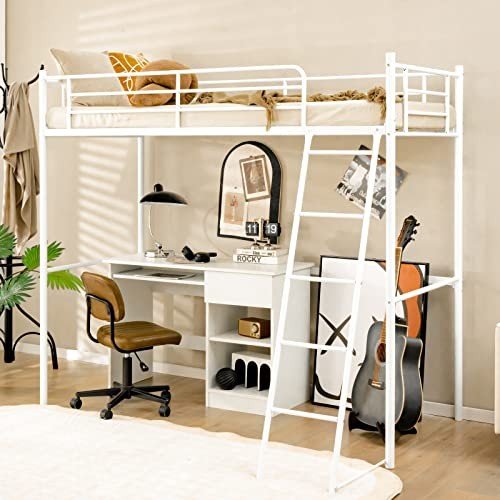A Comprehensive Guide to Children's Bunk Beds: Styles, Benefits, and Safety Considerations
Bunk beds have become a popular choice for households looking to maximize space and offer an enjoyable sleeping environment for children. With their distinct style, they provide an innovative and useful solution for shared bedrooms, playrooms, or even guest lodging. This article explores the various styles of children's bunk beds, their advantages, security considerations, and answers some frequently asked questions.
The Allure of Bunk Beds
Kid's bunk beds are more than just space-saving structures; they are also an entrance to adventurous dreams and imaginative play. Below is a detailed evaluation of their numerous advantages.
Advantages of Bunk Beds
- Space-Saving: Bunk beds efficiently utilize vertical space, making them an ideal choice for smaller sized rooms.
- Lively Design: Many bunk bed designs consist of slides, tents, and themed elements, triggering creativity and enjoyment.
- Partner Sharing: Bunk beds are ideal for siblings sharing a room or accommodating slumber parties.
- Flexible Use: Some models can be separated into 2 specific beds, providing flexibility as kids grow.
- Storage Options: Many bunk beds include built-in drawer storage or shelves, further boosting their functionality.
Designs of Children's Bunk Beds
The range of bunk beds readily available today caters to different preferences and needs. Below is a summary of some popular designs.
| Style | Description | Best For |
|---|---|---|
| Standard Bunk Bed | A standard style featuring one bed stacked above another. | Siblings sharing a room. |
| Loft Bed | Comparable to a bunk bed without the bottom bunk, enables for a work area or play area below. | Limited space for play/desk. |
| L-Shaped Bunk Bed | 2 beds organized in an L-shape, often with additional areas for storage or play. | Special space designs. |
| Twin Over Full | A twin bed over a complete bed, accommodating various sleep requirements. | Growing children and teens. |
| High Sleeper | Stands even greater than a loft bed, normally including a desk or play location listed below. | Older kids requiring more play/desk space. |
| Camping Tent Bunk Bed | Bunk beds with a canopy or tent-like structure, producing a relaxing, enjoyable space. | Active and imaginative children. |
Secret Features to Consider
When selecting the best bunk bed for children, the following features are worth thinking about:
- Material: Bunk beds can be made from wood, metal, or a combination. Each has its distinct visual and durability.
- Weight Capacity: Always validate the weight limitation of the bunk bed to ensure it can accommodate your children securely.
- Security Rails: Ensure the top bunk has tough rails to avoid falls.
- Ladder Security: A well-designed ladder must use easy and safe access to the upper bunk.
- Ending up: Ensure any finishes are non-toxic and safe for kids.
Safety Considerations
Security is vital when it concerns kids's bunk beds. The following guidelines need to be followed:
- Age Appropriateness: Generally, kids under six years of ages must not sleep in the upper bunk due to security risks.
- Strong Construction: Ensure the frame and products are strong and can support the weight without sagging.
- Routine Maintenance: Periodically examine for loose screws, bolts, or other components that might require tightening up.
- Clear Play Area: Keep the area around the bunk bed devoid of toys and barriers to decrease tripping risks.
Setting Rules for Safe Use
Establishing standards for bunk bed usage will assist make sure security:
- Limit Jumping and Climbing: Children ought to be encouraged against leaping from the top bunk and climbing on the sides.
- Monitoring Sleepovers: Monitor young visitors while they are using the bunk bed for the first time.
- Educate on Ladder Use: Teach how to use the ladder securely, highlighting the significance of dealing with the ladder when going up or down.
Often Asked Questions
1. What Toddler Bunk Beds hattiedeleon.top is suitable for a child to oversleep the top bunk?
Many makers suggest that children need to be at least six years of ages to oversleep the upper bunk. This standard is designed to alleviate the danger of falls.
2. Can bunk beds be personalized?
Yes, many producers use personalized alternatives, including colors, materials, and additional features like drawers or desks.
3. Are bunk beds safe for weight?
Bunk beds have weight limits, typically varying from 200 to 400 pounds, depending upon the model and material. Always examine the producer's specifications.
4. How do I maintain and clean a bunk bed?
Frequently look for loose parts, keep the bed tidy by wiping down surface areas, and make sure the bedding is fresh to promote a safe and hygienic sleep environment.
5. Can bunk beds be separated into individual beds?
Lots of bunk beds include an alternative to separate them into 2 individual beds, providing long-term versatility.
Kid's bunk beds are more than mere furnishings; they are a practical, versatile, and imaginative element of a kid's space. With numerous designs available and many security considerations to keep in mind, moms and dads can choose the perfect bed that fits their space, meets their kids's needs, and imparts a sense of adventure. By understanding the benefits, designs, and safety steps connected with bunk beds, families can create a wonderful and safe sleeping environment for their children. Whether for siblings sharing a room or space-saving options, bunk beds stay a beloved choice for lots of homes.

